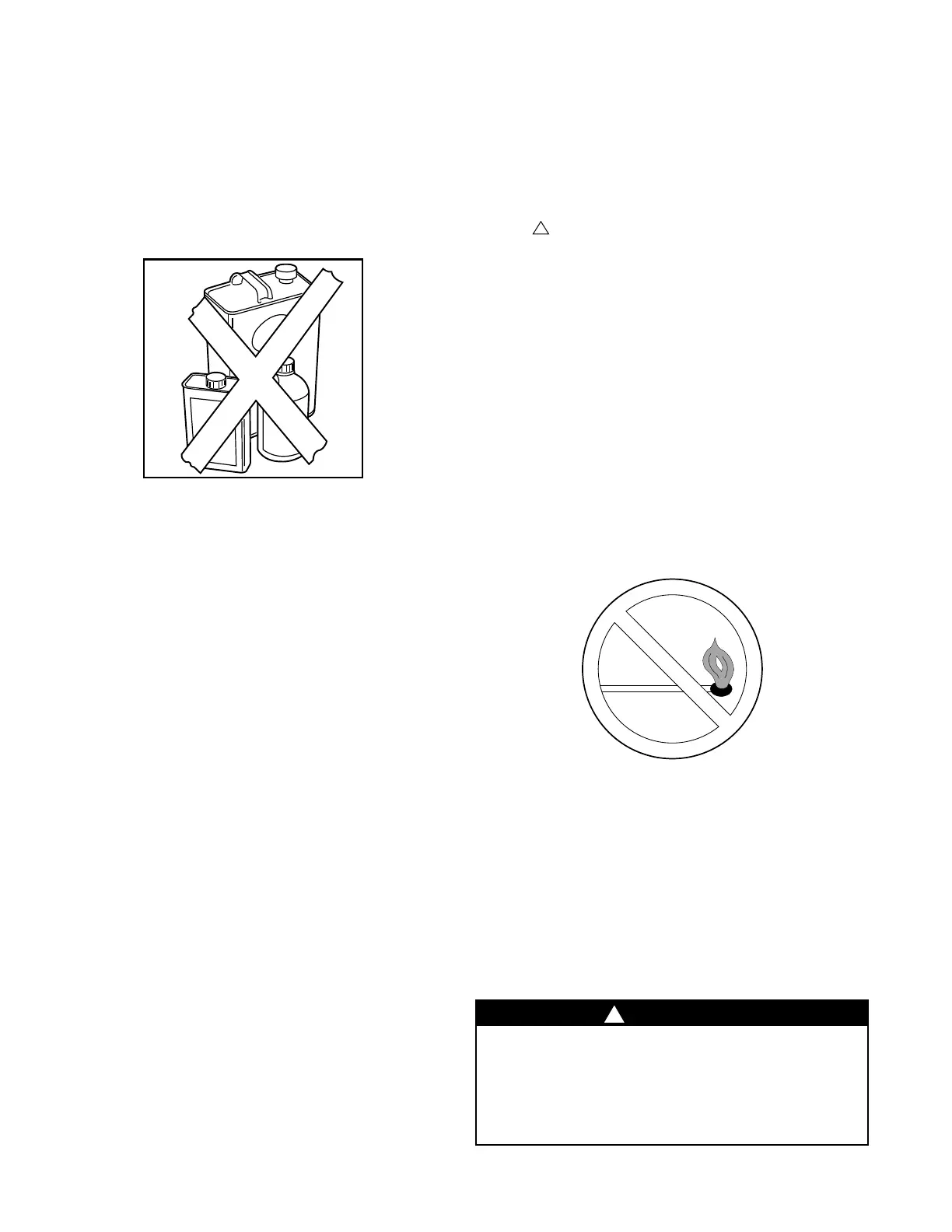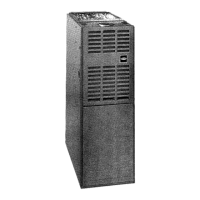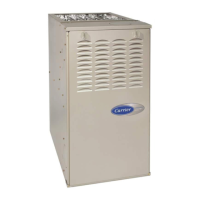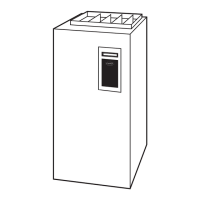4
Important facts
Your furnace must have adequate airflow for efficient
combustion and safe ventilation. Do not enclose it in an
airtight room or “seal” it behind solid doors.
To minimize the possibility of serious personal injury, fire,
furnace damage, or improper operation;
carefully follow
these safety rules:
• Keep the area around your furnace free of combustible
materials, gasoline, and other flammable liquids and
vapors.
5
• Do not cover the furnace, store trash or debris near it, or
in any way block the flow of fresh air to the unit.
• Combustion air must be clean and uncontaminated with
chlorine or fluorine. These compounds are present in many
products around the home, such as: water softener salts,
laundry bleaches, detergents, adhesives, paints, varnishes,
paint strippers, waxes, and plastics.
Make sure the combustion air for your furnace does not
contain any of these compounds. During remodeling be
sure the combustion air is fresh and uncontaminated. If
these compounds are burned in your furnace, the heat
exchangers and metal vent system may deteriorate.
• A furnace installed in an attic or other insulated space
must be kept free and clear of insulating material. Examine
the furnace area when installing the furnace or adding
more insulation. Some materials may be combustible.
NOTE:
Do not use this furnace if any part has been under
water. Immediately call a qualified service technician to
inspect the furnace and to replace any part of the control
system and any gas control which has been under water.
NOTE:
The qualified installer or agency must use only fac-
tory-authorized replacement parts, kits, and accessories
when modifying this product.
This furnace contains safety devices which must be man-
ually reset. If the furnace is left unattended for an extended
period of time, have it checked periodically for proper
operation. This precaution will prevent problems associ-
ated with no heat, such as frozen water pipes, etc. See
“Before You Request a Service Call” section in this
manual.
Safety considerations
Installing and servicing heating equipment can be hazard-
ous due to gas and electrical components. Only
trained and qualified personnel should install, repair, or
service heating equipment.
Untrained personnel can perform basic maintenance func-
tions such as cleaning and replacing air filters. All other
operations must be performed by trained service person-
nel. Observe safety precautions in this manual, on tags,
and on labels attached to the furnace and other safety pre-
cautions that may apply.
Recognize safety information: This is the safety-alert
symbol . When you see this symbol on the furnace and
in instructions or manuals, be alert to the potential for per-
sonal injury.
Understand the signal word—DANGER, WARNING, or
CAUTION. These words are used with the safety-alert
symbol. DANGER identifies the most serious hazards
which will result in severe personal injury or death.
WARNING signifies hazards that could result in personal
injury or death. CAUTION is used to identify unsafe prac-
tices which would result in minor personal injury or prod-
uct and property damage.
Starting your furnace
Instead of a continuously burning pilot flame, your furnace
uses an automatic hot surface ignition system to light the
burners each time the thermostat turns your furnace on.
Follow these important safeguards:
• Never attempt to manually light the burners with a match
or other source of flame.
6
• Read and follow the operating instructions on the fur-
nace, especially the item that reads as follows:
Wait 5 minutes to clear out any gas. Then smell for gas,
including near the floor. If you smell gas, STOP! Follow
“B” in the safety information above on this label. If you
don’t smell gas, go to the next step.
• If a suspected malfunction occurs with your gas control
system, such as the burners do not light when they should,
refer to the shutdown procedures on the furnace or in the
next section to turn off your system, then call your dealer
as soon as possible.
WARNING
Should overheating occur, or the gas valve fail to
shut off the gas supply, turn off the manual gas
valve (See Fig. 8) to the furnace BEFORE turning
off the electrical supply. A failure to follow this
warning could result in a fire or explosion, and
personal injury or death.
!

